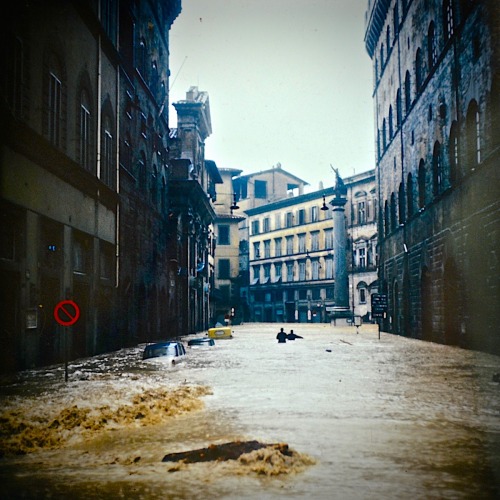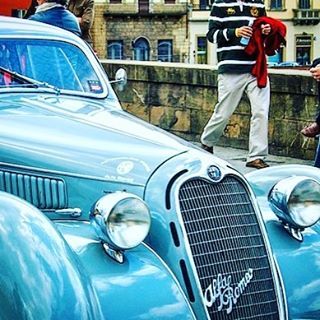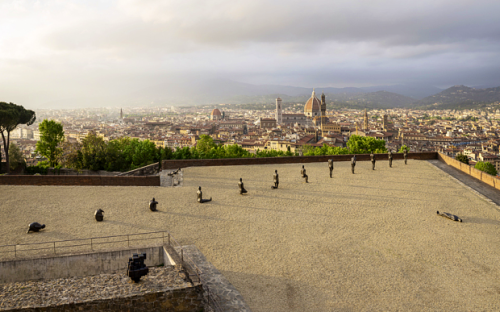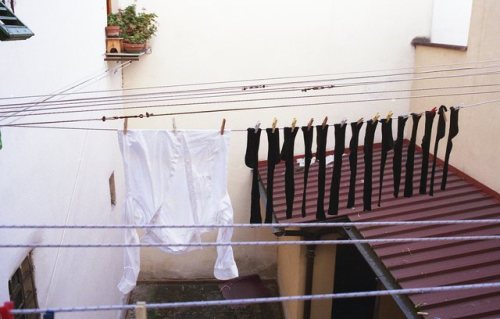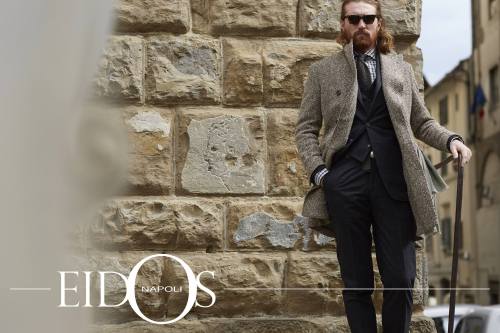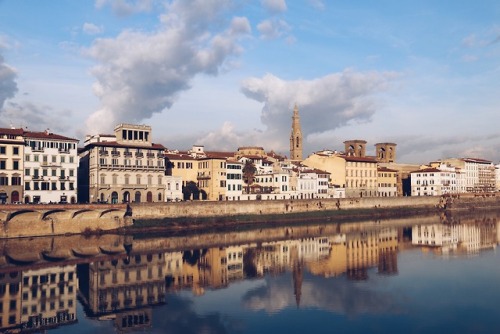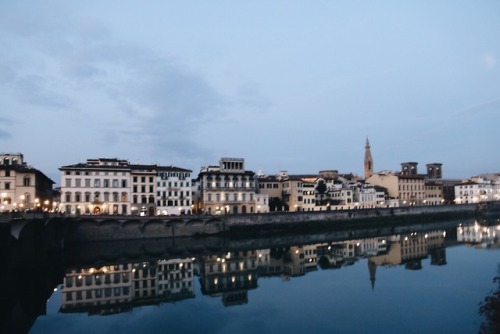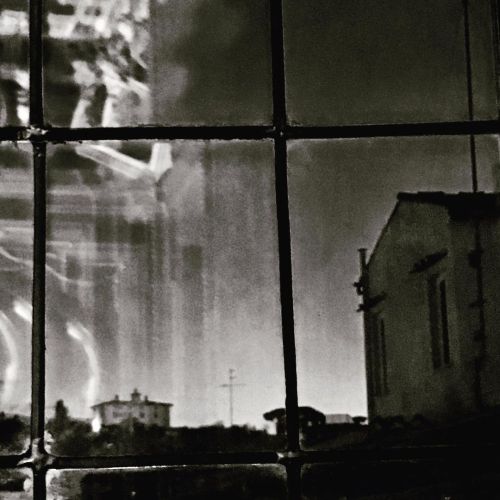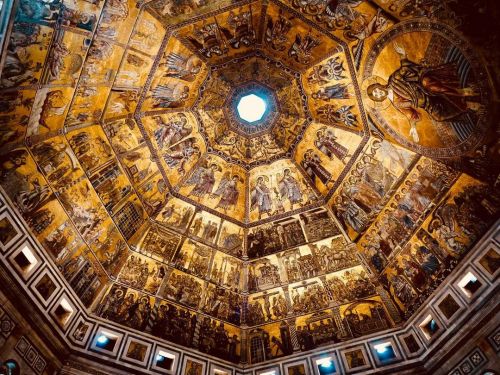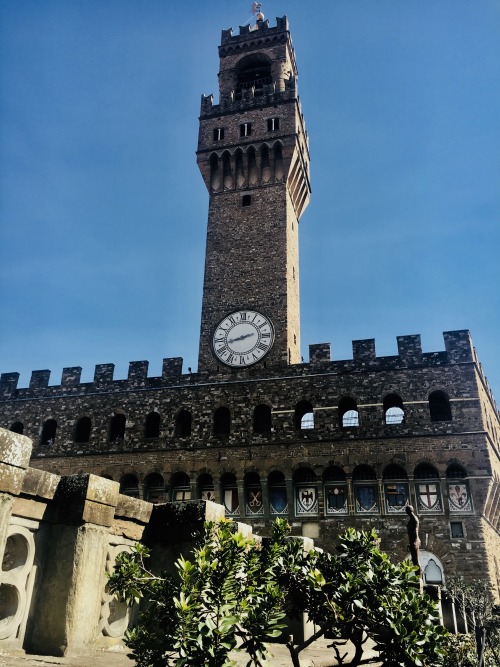#firenze
A chair floats in the Arno after the flood of 1966. Photo from the Korab archive, Library of Congress http://www.florence-flood.com
Post link
A view towards Piazza Santa Trìnita from the Arno. You can see two figures walking in waist to chest-high water. November 4th, 1966
Post link
Alfa Romeo in the Mille Miglia #alfaromeo #firenze #florence #millemiglia (at Florence, Italy)
Post link
I spent most of my Sunday, and International Workers Day, thinking about this fresco inside the Chiesa di San Miniato al Monte in Florence, painted by Mariotto di Cristofano around 1420.
Tightly wrapped around Christ, just barely touching his body, are various tools and instruments that would have been used by laborers in 15th century Florence. Directly below his feet is an inscription in the Tuscan dialect of the Italian language which states, “Whoever does not keep Sunday holy and does not have devotion to Christ, God will condemn to eternal damnation.” This type of image is known by a few different names: Sunday Christ, Christ of the Trades, and Handwerkerchristus, or the Artisan Christ, are to name a few.
Christ is depicted as suffering, he gestures towards his side wound as a reminder of his sacrificial crucifixion. The tools surrounding him would have reminded medieval Christians that, through engaging in work on Sundays, they themselves are perpetuating the suffering of Christ, thus re-crucifying him. The inscription serves as a warning of the consequences for not obeying the obligatory abstinence from work on the Lord’s day.
The closest visual parallel to this type of image is Christ surrounded by the arma Christi, or the instruments of the Passion, which likely informed the pictorial tradition of the Sunday Christ. In this instance, the artisan’s tools have been allegorically transformed into the arma Christi, and through ignoring one’s Sunday obligations, it was understood that the medieval Christian has prolonged the suffering of Christ.
Post link
“ Ada, la bambinaia di Marco, non dette, a dire il vero, segni di una vera e propria pazzia. Ogni tanto se ne andava senza salutare i padroni e rimaneva lontano intere settimane. Un giorno, proprio nel mezzo della cucina, preso Marco, che era ancora in gonnellino, lo lanciò in alto verso il soffitto lasciandolo cadere senza riprenderlo a tempo. Per poco il bimbo non morì di colpo. Quando Marco fu più grande, Ada, che era rimasta nella casa come donna di servizio, lo divertì leggendogli libri d'avventure e raccontandogli fatti meravigliosi. Fu lei a narrargli la storia di suo fratello Ardito, l'altro pazzo.
Ardito era fuggito di casa quando il padre era ancora in vita, e aveva girato il mondo. Perfino in Africa e a Pechino, era stato. Portava sul corpo le testimonianze del suo eterno vagabondare : tatuaggi raffiguranti draghi, case, palazzi, negri e cinesi. In verità Ardito era uno di quegli avventurieri creati, come spesso accade, dalla immaginazione dei concittadini e le sue avventure si riducevano a parecchie truffe, le sue peregrinazioni alle conseguenti permanenze in carcere. Marco però se lo era raffigurato quale glielo aveva descritto Ada : bizzarro viaggiatore col corpo dipinto come un pappagallo.
Quando Marco andò ad abitare in città dai nonni, nella casa dei pazzi viveva soltanto la vecchia madre. Cercò di sapere dove fossero Ada, che si era licenziata da due anni e che non aveva più veduta, e Ardito, ma nessuno, neppure la loro madre, lo sapeva. Fantasticò a lungo su questa misteriosa, lontananza. Parlava spesso di Ada e di Ardito anche con la mamma ed essa gli raccontava di loro cose a lui sconosciute.
Un giorno mentre si divertiva in giardino vide nel profondo e piccolo cortile dei pazzi un uomo ancor giovane, vestito dei soli pantaloni di tela e sdraiato in terra a prendere il fresco ; aveva la pelle del torace bruna con le più strane figure. Non c'era alcun dubbio : quel giovane era Ardito. Marco cominciò ad osservarlo attentamente, incuriosito : poteva infine conoscere la persona che, più di ogni altra, aveva occupato e occupava i suoi pensieri. A un tratto Ardito balzò in piedi e, rapidamente, arrampicandosi su per il muro, arrivò all'altezza del giardino, a pochi metri da Marco. Il ragazzo scoprì sul suo dorso il disegno di un lungo pugnale. Ardito ripiombò nel cortile e si sdraiò di nuovo in terra. Egli era stato veramente il protagonista delle innumerevoli avventure narrate da Ada ; la sua prodigiosa agilità e la figura del pugnale sembrarono a Marco le prove più certe. Però egli n'ebbe una pungente paura. La notte Ardito apparve costantemente in un sogno in cui si tentava di rapirgli la mamma. Da quella sera, prima di andare a letto, volle accertarsi che la porta del giardino fosse bene sprangata. “
Romano Bilenchi,Dino e altri racconti, Vallecchi editore, Firenze, giugno 1944²; pp. 58-61.





Tomas Saraceno, Aria exhibition at the Palazzo Strozzi, Florence. 22 February- 01 November 2020.



